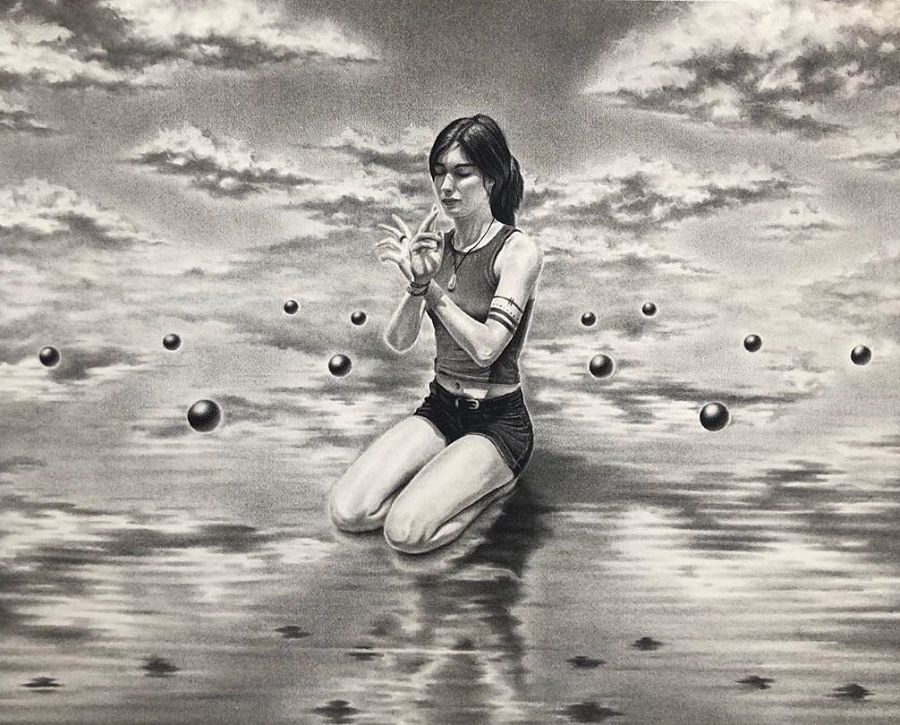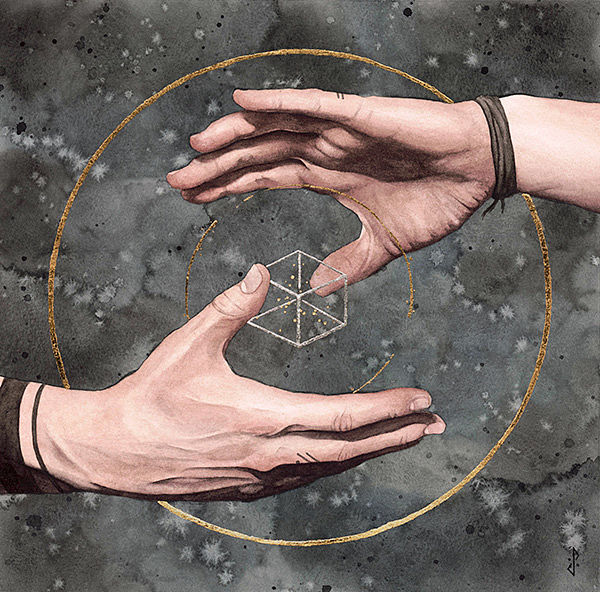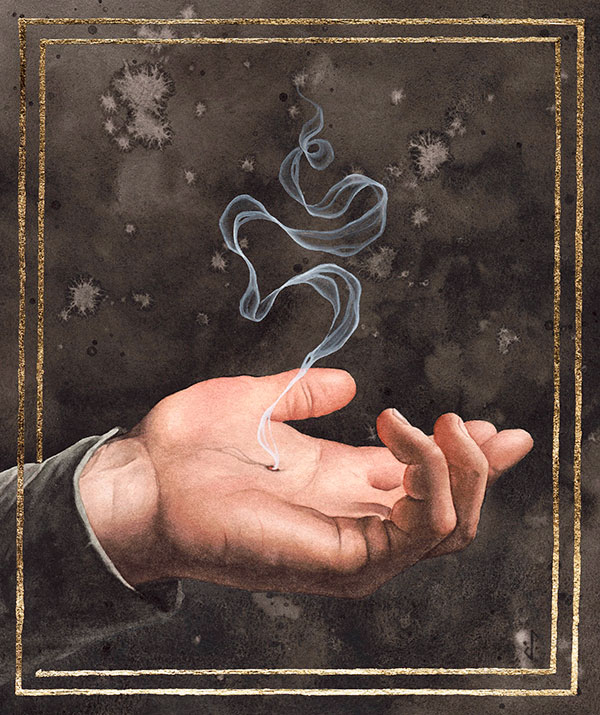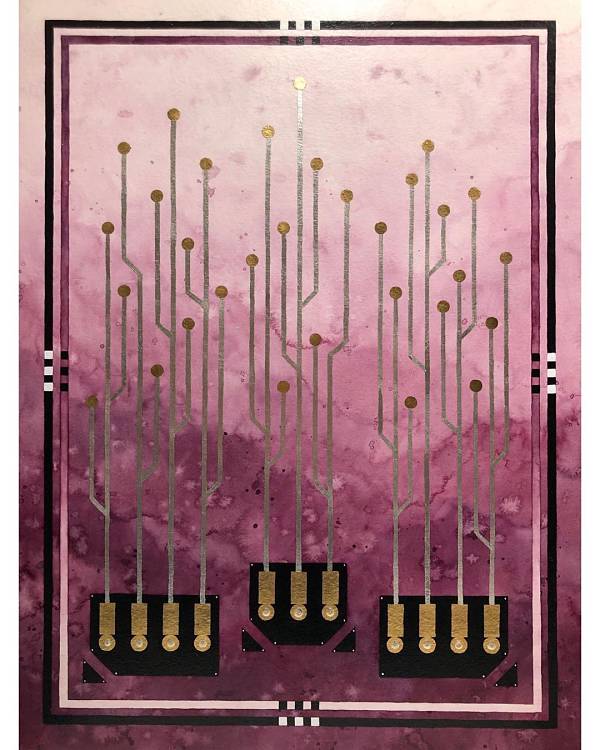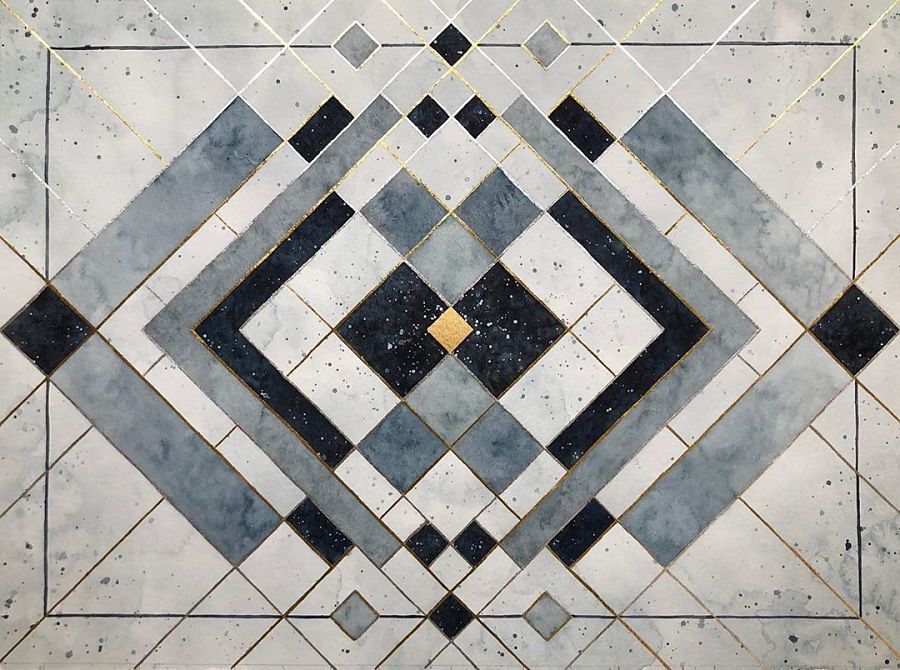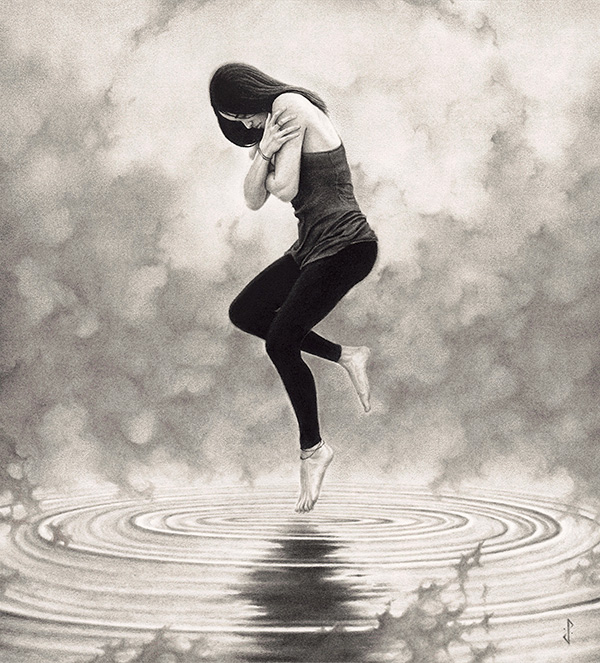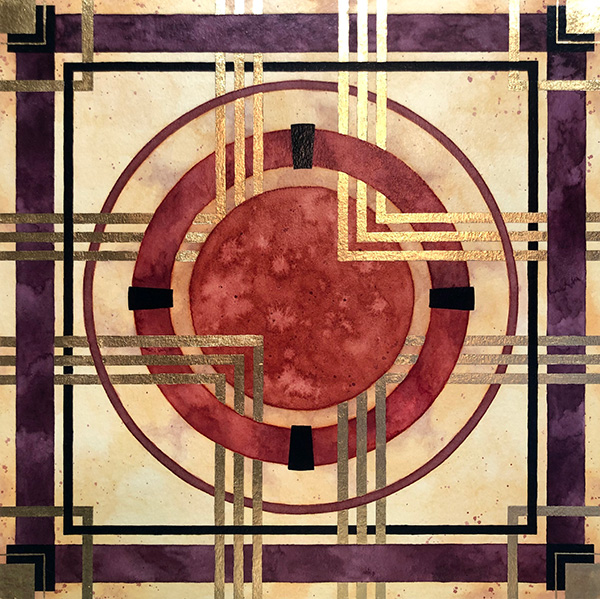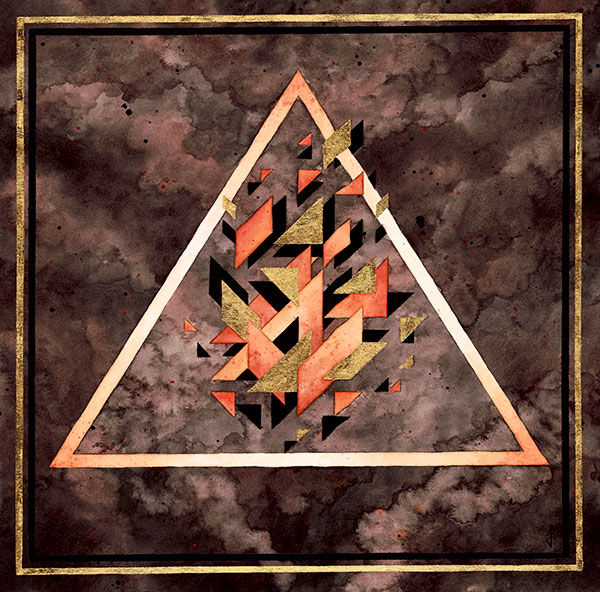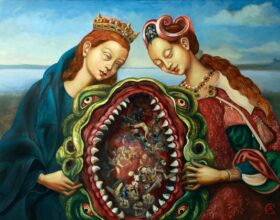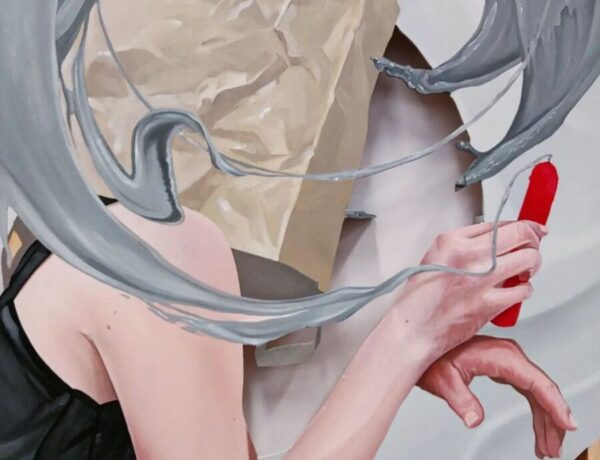Since Stuart Holland’s exhibition “Else(where)” back in May 2019, his work has evolved to a more symbolic body of work. He is currently focussing his mind on prayers and the wide spectrum in which they exist. Stuart is constantly building his own visual language, creating paintings and drawings that compel you to look at them and uncover what they are hiding.
Keep reading to discover Stuart Holland’s newest inspirations, how he came to become the artist he is today, and what we can look forward to from him in the future…
Since your last interview with Beautiful Bizarre on your exhibition preview, how has your work developed and evolved?
Since the opening of my solo show ‘Elsew(here)’ at Arch Enemy Arts back in May of 2019, my work has been taking some interesting turns that have even taken me by surprise. Starting back in the summer, I began a new body of work that was much more symbolic rather than narrative like much of my portfolio has been. The decision to shift to more symbolic and less representational work arose largely out of my interest in storytelling and how different languages, each with their own structures and lenses with which they frame the world and our experience of it, have their own strengths and weaknesses at conveying particular ideas. My interests and personal fields of study have led me through areas like quantum physics, various spiritual and philosophical traditions that deal pretty heavily in abstract thoughts that can be hard to visualise, and even harder to describe through words. This new body of work is really an exploration for me to try and cultivate a new personal artistic language through which I can attempt to better articulate many of these concepts that can be hard to wrap our minds around.
Are there any new ideas/themes you are exploring?
In undertaking this new body of work, I’ve set an intention to make each piece a kind of visual representation of a prayer. Over the past few months, I’ve had a significant shift in my attitude and appreciation for the wide spectrum of what prayer can entail. I grew up as an angry atheist adolescent in a progressive yet religious home and spent a lot of time reacting negatively to anything that had a place in religion. But I’ve now come to realize what a powerful tool prayer can be in having a deep, honest conversation with oneself and the Universe itself by expressing myself through my artwork. Buddhist mandalas, stained glass windows, Native American prayer blankets, and textile art traditions from all over the world have begun to be a huge inspiration for me as they embody this deep rooted commitment to making art that speaks to these timeless ideas of memory, tradition, animistic and eco-centric beliefs, and being a microcosm of something much larger and beautiful than we can really comprehend and exploring the incredibly intricate web that weaves everything we know into the very fabric of our reality. These are concepts that have been around for thousands of generations and can still be found to be very much alive and well in many indigenous communities across the world who still seek to live in harmony with the natural world, but much of industrialized modern society has seemed to have forgotten and lost touch with. I want to create work that can help people reconnect and tap back into these powerful ideas that have a high level of consequence in our ability to interact more positively with ourselves and everything we encounter in life.
How did your artistic career begin? Did you begin with painting and drawing or did you try other forms of creating first?
Drawing was easily the first medium that I latched onto as a child. I was given a beautiful illustrated animal encyclopedia when I was really young and spent a lot of time trying to emulate the illustrations in it. Drawing was also really important because it was the easiest for me to do while being in class or when I had to sit and be quiet in church. Watercolour was probably the medium that emerged next and has been something I’ve been teaching myself since high school. I never really had any formal education or lessons with watercolor until I attended a workshop taught by Nick Runge (I highly recommend everyone checking out his beautiful work). I really am quite enamoured with watercolour and I love how entropic and surprising it can be at times, and it teaches me a lot about embracing uncertainty and the beauty that can come from relinquishing some degree control in the process. Art has always been a personal therapeutic practice for me, but it’s only been the last two or three years where I feel I’ve earned the title of having an art ‘career,’ and it even feels a bit awkward to say as it feels a bit reductive of what I really hope to achieve with my work. It feels much more natural for me to claim the title of ‘artist’ as creating art feels like such an integral part of who I am.
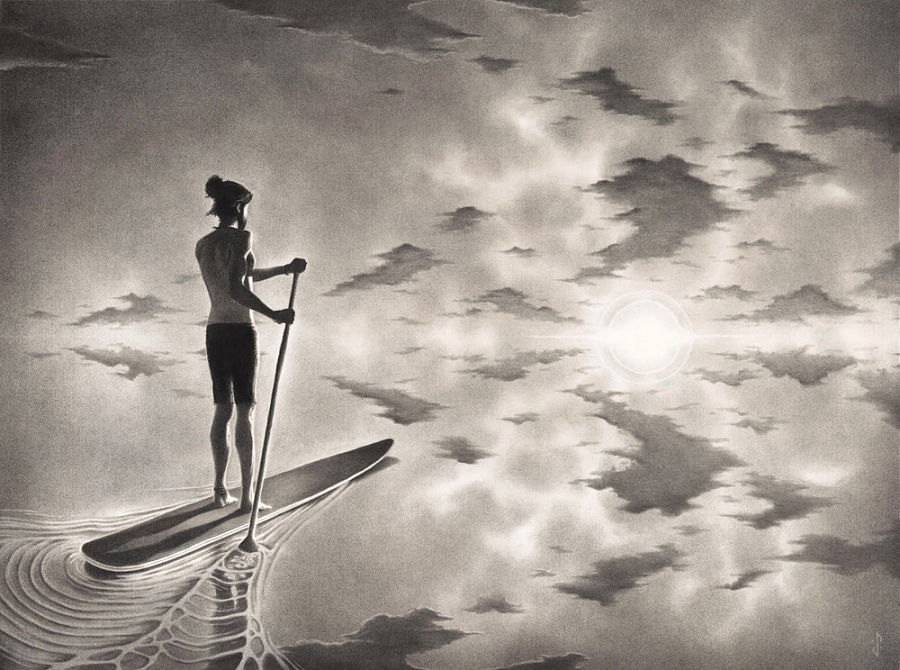
Where do you see your artwork evolving and moving towards?
It can be difficult to predict where exactly the next bend of the creativity river will take me, but if I was to make some guesses at where my work would go I would guess that there is a move towards exploring some oil painting in my narrative work coming up as well as exploring some textile mediums and techniques and integrating them into my symbolic prayer work. The idea of creating figure//ground distortion through mixing layering, weaving, and materials with different qualities of depth, flatness, and reflectivity has been growing in my work over the past year and I plan on refining exactly how I want to use those very intentionally. I also have been playing around with the idea of utilising some simple, but powerful text in my work, which I have been very averse to in my art forever. I’m also hoping that as I hone my vision for this new series I will find.
Did you get a formal art education or are you self taught?
That question is one that I feel is less cut and dry than just one answer or the other. I did attend the art program at Boise State University in my hometown and earned my BFA with an emphasis in printmaking back in 2014. I’m very grateful for all of what my formal education taught me about art, as I was fortunate to have some incredible and insightful human beings as mentors, but I would still be hesitant to say that the majority of my art education came from that particular time period and setting. There is so much self-teaching, play and experimentation that goes into an artist or creative person of any kind discovering their own unique voice that I feel it would be a disservice to not honor all the other informal teachers and other sources of insight and inspiration that have had a powerful influence in shaping my artistic voice. I honestly believe that some of the most important lessons I’ve learned and applied to my art making have come from other sources, which might appear to be unrelated and tie into cultivating a successful creative process in surprising ways. I would highly encourage artists of every age and skill level to follow wherever their curiosity takes them and always be open to seeing and listening to what lessons and messages come from any discipline, practice, or field of study. There is such a wide world of knowledge and experience out there to draw from, but it requires action on your part to go find it and engage with it.
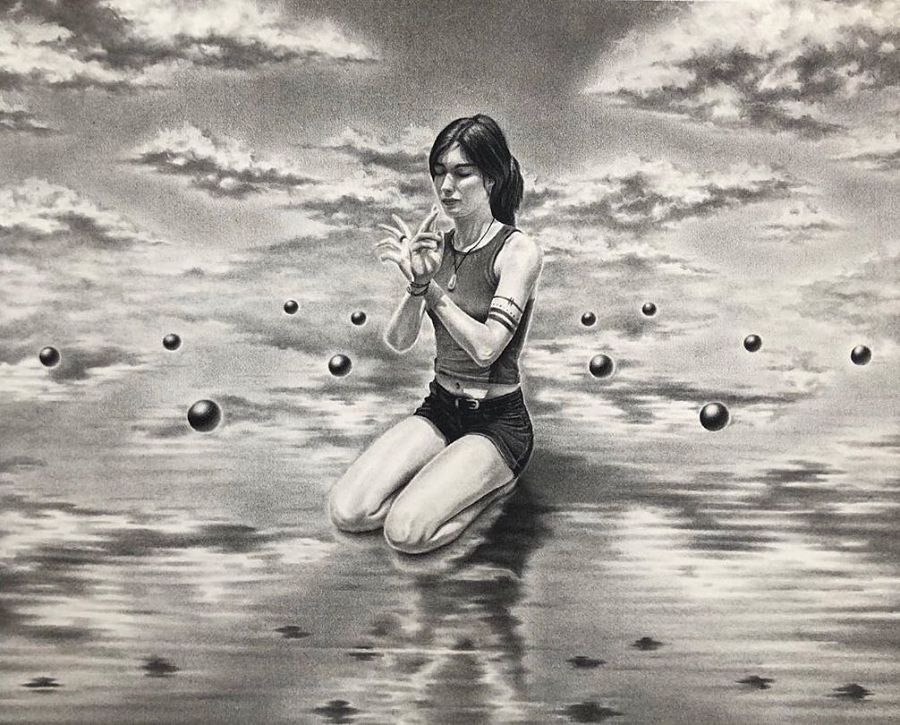
If you weren’t creating art, what would you be doing?
It’s hard to say what my life would look like without art being such a huge focus. However, I am lucky to have several other creative outlets that fill my free time like writing, playing guitar, and reading. My guess is that without art, I would likely be pursuing a degree in psychology to become a therapist specializing in psychedelic therapies. I’m very much interested in the fields of neuroscience, human behavior, and psychology and do a lot of reading and learning on my own, but without art I feel like that would likely fill the void. I’m also starting to look into gaining experience working in the non-profit sector and hope to get more into working to help Native communities here in the US and work towards expanding their access to resources, education, and help ensuring their voices are heard, their cultural identities are honored, and that they have a respected seat at the table of American society.
What can we look forward to from you in 2020?
I’m quite excited with where my journey will be taking me in the next year and am anticipating it to be a year of significant growth. I would expect to see my body of prayer paintings to continue to unfold as I become more familiar with the visual language I am building, as well as a future melding of the symbolic work with my more figurative and narrative work. I also anticipate some more integration of textiles and embroidery into my work. I’m also writing a book that is coming along nicely and some short IGTV videos that will touch on many of the concepts that I explore in my work, as I am trying to hone my written and spoken voice in tandem with my artistic voice. All things considered, I have my work cut out for me and am very much feeling prepared to rise to the challenge.


